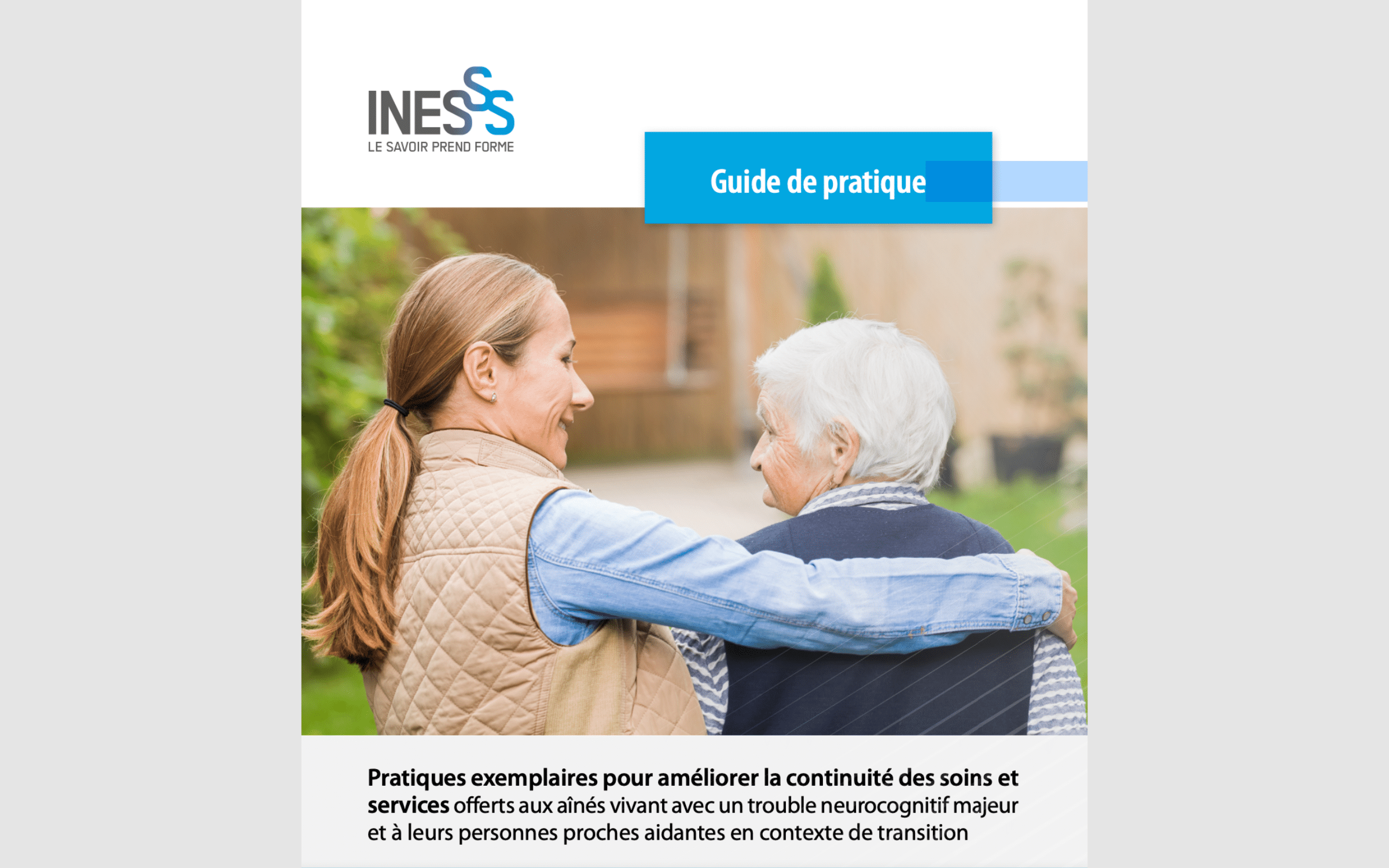This practice guide (25 pages, in French) highlights best practices for ensuring continuity of care during transition periods for older adults with major neurocognitive disorders (MNCD) and their caregivers. The guide is based on a literature review of practices that support continuity of care in transitional contexts. A committee composed of caregivers, researchers and professionals was also consulted to help define key terms and themes. The document is intended for professionals and other stakeholders working in health and social service organizations, as well as for facility managers seeking to support ongoing improvements to the quality of care and services.
The guide is divided into four sections:
- The core components of care and services in transitional contexts
- General practices for improving care and services across different transition settings
- Practices specific to transitions involving emergency department visits or hospital stays
- Practices specific to transitions into a new living environment
Like to know more?
See the publication’s page on the INESSS website to learn more about its development, including the report and review of current practices that informed it.


